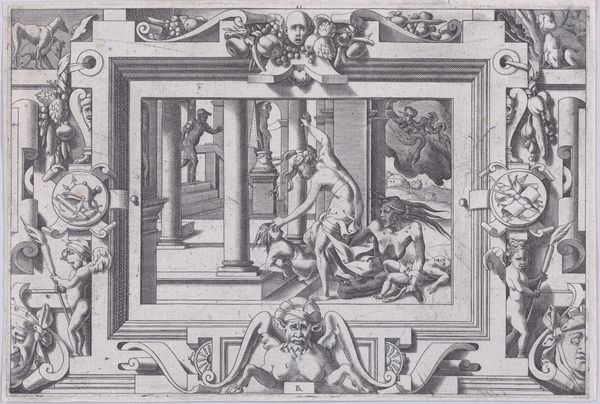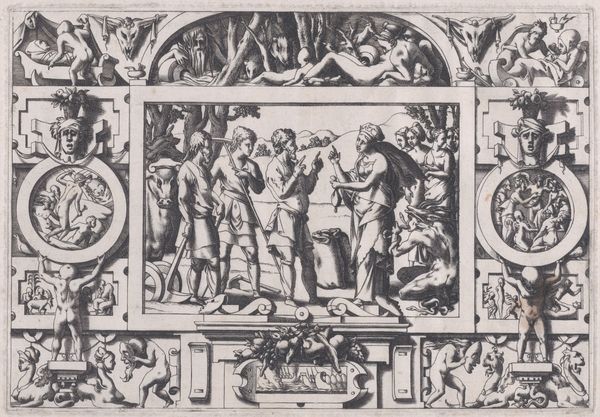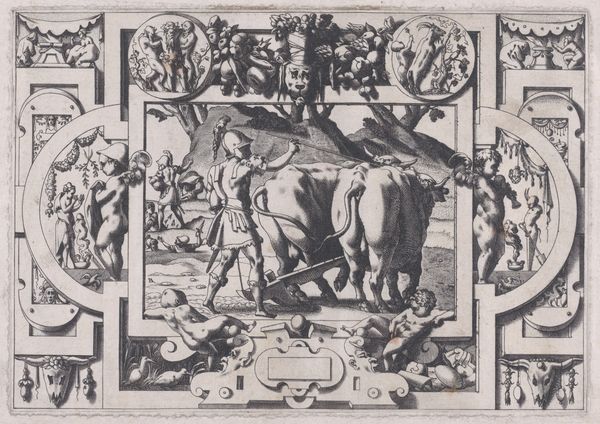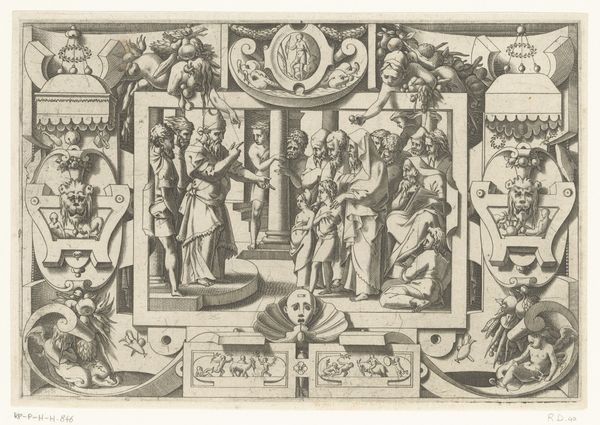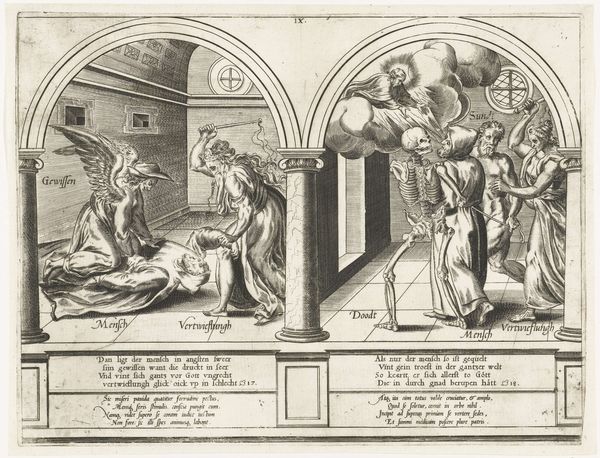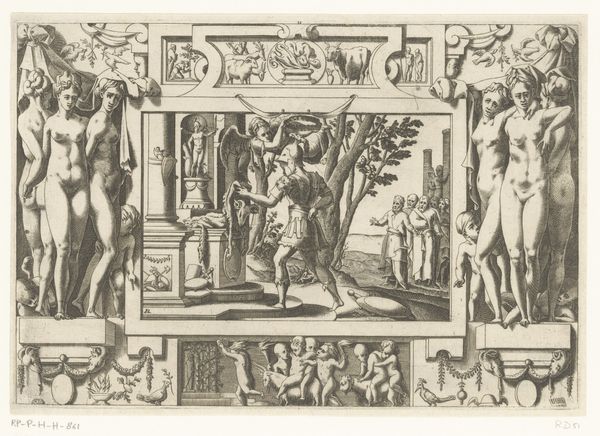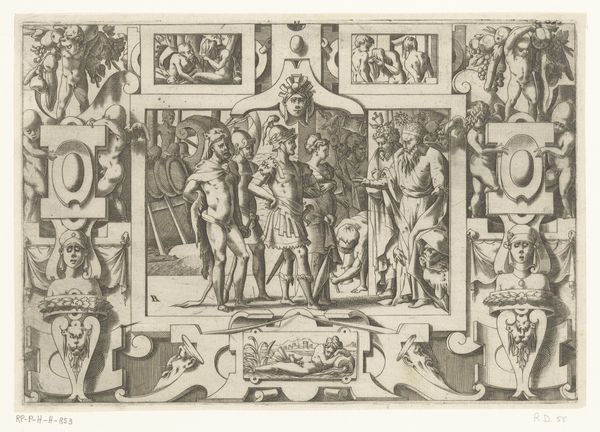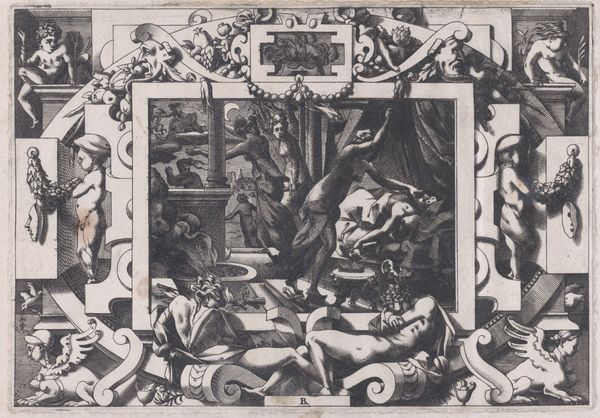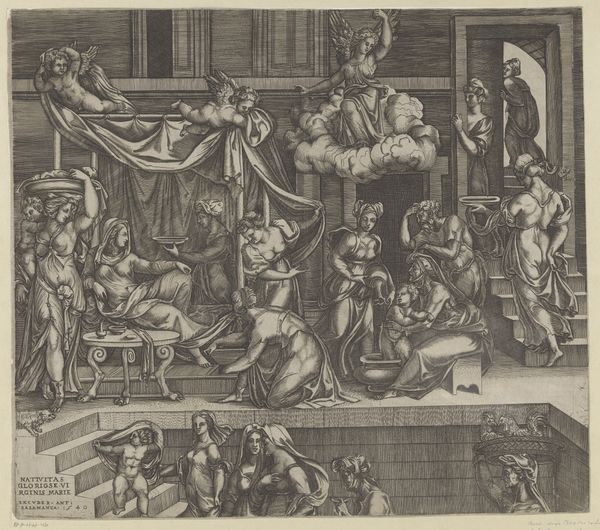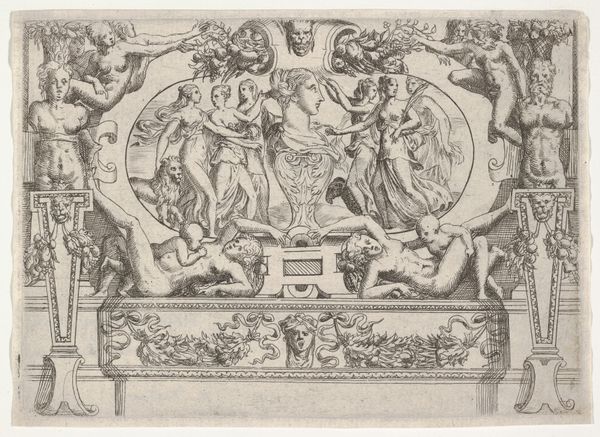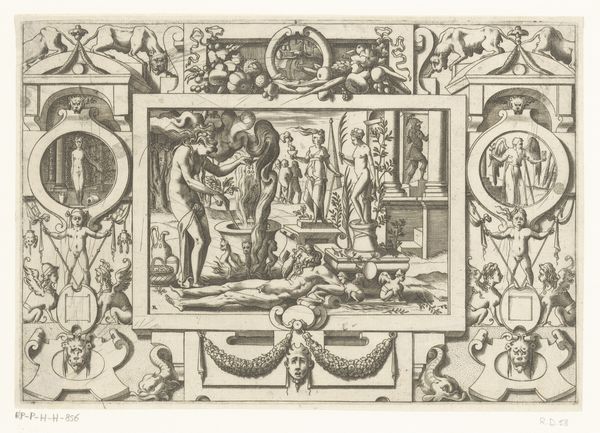
The Children of Medea and Jason Give Creusa the Fatal Present (Par ses deux fils à l'épouse nouvelle envoyé en don la couronne mortelle...), from "Jason and the Golden Fleece" 1563
0:00
0:00
drawing, print, engraving
#
drawing
#
narrative-art
# print
#
figuration
#
11_renaissance
#
line
#
history-painting
#
engraving
Dimensions: Sheet: 6 5/16 × 9 3/16 in. (16 × 23.4 cm)
Copyright: Public Domain
Editor: We're looking at René Boyvin’s engraving from 1563, titled *The Children of Medea and Jason Give Creusa the Fatal Present*. The level of detail is astounding, particularly given the printmaking medium. There's a definite tension in the composition. What catches your eye from a formal perspective? Curator: Immediately, the frame itself. Notice how it's not merely decorative, but integral to the narrative. The symmetry established by the two lion figures at the base is echoed in the upper register, though there the putti lack a clear mirroring effect. This intentional disruption creates a visual imbalance, reflecting the discord of the depicted scene. The contrast of light and dark areas also deserves careful consideration. Editor: The darkness around some of the figures definitely amplifies the dramatic effect. Do you think that serves other structural roles in the engraving? Curator: Precisely. The darker areas aren't merely shading; they actively define the figures and create spatial recession. Look at how the strong lines delineate Creusa's robes and the children's limbs, emphasizing their forms within the scene. Observe, too, how the columns create verticality, and the architecture reinforces the staged-drama unfolding within. The framing is critical to how we understand it, isn’t it? Editor: I hadn't considered the impact of the architectural details in dictating our reading, but now it makes complete sense. The figures, after all, aren't existing in space independent from the linear background. Curator: Exactly. Everything is synthesized to advance our apprehension. Consider, then, that the choice of line engraving lends a sharpness and clarity – highlighting details but at the cost of broader tonal gradations. Ask yourself how different it would seem as a woodcut with greater textural variety. Editor: The linear style really heightens the drama, almost like it's stripping the scene down to its core elements of form. It helps communicate all the themes. Curator: Indeed. Thinking about how Boyvin chose and used specific visual elements really focuses attention on how prints generate meaning in form, not merely context.
Comments
No comments
Be the first to comment and join the conversation on the ultimate creative platform.
